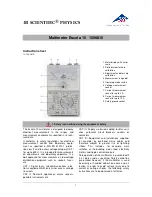
C H A P T E R 3 C O N F I G U R I N G V 1 0 0
V100 Versatile Multiplexer Technical Manual Version 2.2
Page 78 of 231
Node3 uses the E1 link to communicate with Node0. It uses the IP aggregate to Node2 to reach Node1
and Node2:
It is necessary to enter the routes to all nodes since any chassis only has knowledge of its immediate
neighbours; the address in the data packets contains the full destination port address so by consulting the
routing table, every node can determine the next route to the destination even if it is to an intermediate
node, no matter how many nodes there are in the network.
The V100 architecture allows a maximum of 240 chassis to be interconnected in a single network and
individual routing information must be entered into each chassis when the network is commissioned. Once
all the data has been entered, the entire network may be managed from any node – the remote
supervisor function depends on the routing tables as well!
Three options are presented on the ROUTING page, each of which may be accessed using the
conventional cursor keys and selected using the <space> bar. The typical entry sequence is as follows:
STEP 1
Select <DELETE ALL ROUTES> to clear all entries and start afresh.
STEP 2
Select <NEW ROUTE> to create a new entry line in the table. This may
then be accessed using the cursor keys to enter data. Repeat this step until all routes has been entered.
STEP 3
Select <TIDY LIST> to regroup the entries in a logical order. All routes
from each node are arranged in ascending order, with any specific channel routes from each node at the
end of each group.
















































